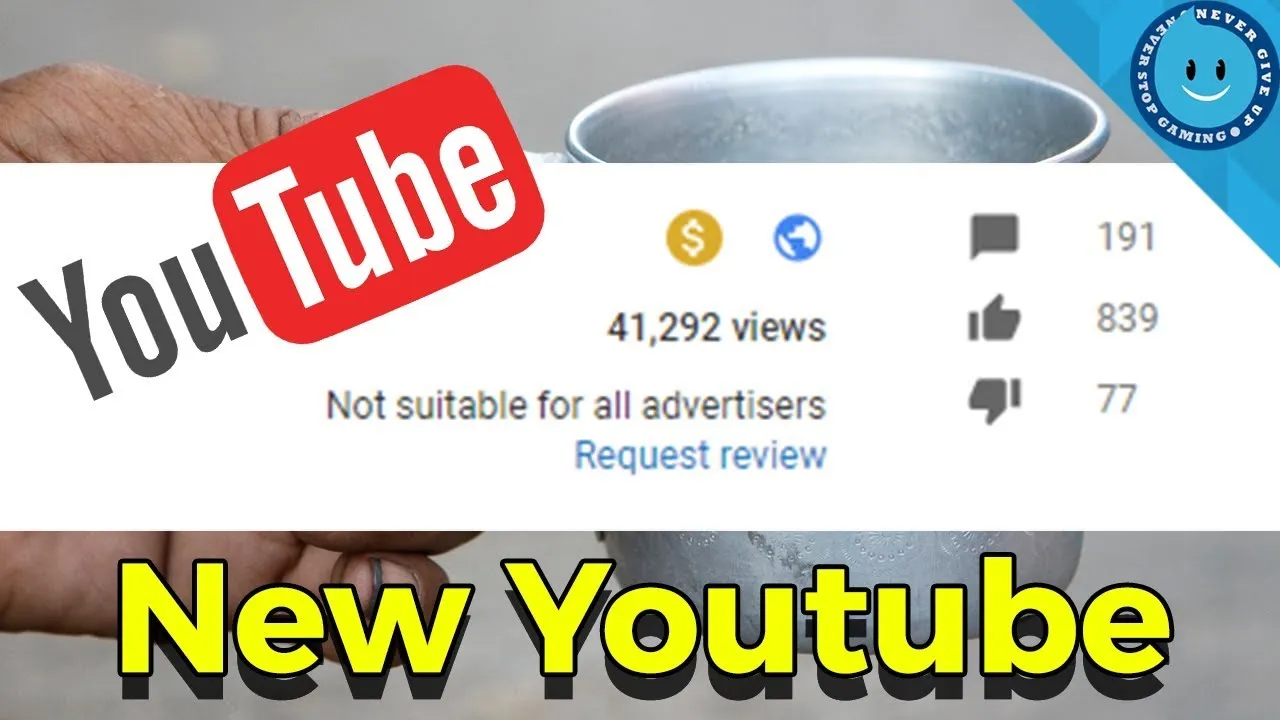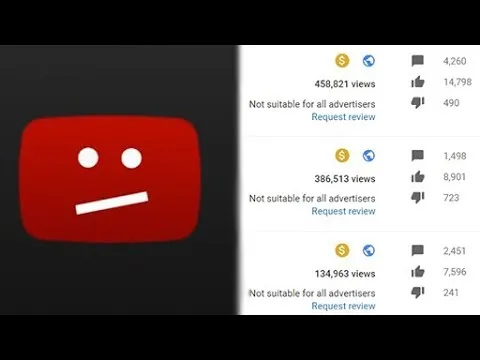Navigating YouTube can be a thrilling experience, but it also comes with its challenges, especially when it comes to monetization. Many creators dream of turning their passion into profit, only to find themselves facing the dreaded demonetization. This post aims to shed light on the common reasons why channels get demonetized and offer practical solutions to help you stay in the green. Let’s dive in!
Understanding YouTube Monetization

YouTube monetization is the process by which creators can earn money from their videos. To get started, you need to meet certain criteria set by YouTube, including:
- Having at least 1,000 subscribers
- Accumulating 4,000 watch hours in the past 12 months
- Adhering to all of YouTube's policies and guidelines
Once you meet these requirements, you can apply for the YouTube Partner Program (YPP), which allows you to monetize your content through ads, channel memberships, Super Chats, and more. However, it’s essential to maintain compliance with YouTube’s rules to keep your monetization status intact.
So, what does it mean to be demonetized? It’s when YouTube removes your ability to earn money from ads on your videos. This can happen for several reasons, including:
| Reason | Description |
|---|---|
| Content Violations | Posting content that violates YouTube’s community guidelines, like hate speech or graphic violence. |
| Copyright Issues | Using copyrighted material without permission can lead to demonetization. |
| Inactivity | Not meeting the minimum watch hours or subscriber count over a specified period may result in losing monetization. |
Understanding these aspects of YouTube monetization is crucial for creators aiming to build a sustainable income. Staying informed about the rules not only protects your channel but also ensures you can continue engaging your audience without financial setbacks.
Also Read This: Exploring Laura Caldwell's YouTube Earnings
Common Reasons for Demonetization

Getting demonetized on YouTube can feel like a kick in the gut for creators. Let's dive into some of the most common reasons why this happens, so you can steer clear of these pitfalls.
- Copyright Violations: Using copyrighted material without permission is a surefire way to get your videos demonetized. This includes music, videos, and even images. Always ensure you have the right to use any material in your content.
- Inappropriate Content: Content that is deemed inappropriate, such as hate speech, violence, or adult themes, can lead to demonetization. YouTube’s community guidelines are strict, so it's essential to keep your content clean and respectful.
- Misleading Metadata: If you use misleading titles, tags, or thumbnails to trick viewers, it can result in demonetization. Always be genuine with your metadata to build trust and avoid penalties.
- Engagement in Spammy Behavior: Engaging in spammy practices, like artificially inflating views or engagement numbers, can land you in hot water. YouTube actively monitors this behavior, and it can hurt your channel's standing.
- Repeated Violations: If you’ve been warned or demonetized in the past and continue to break the rules, you might face permanent demonetization. Consistency matters—always adhere to guidelines.
Also Read This: How to Find a Designer on Behance
How to Avoid Demonetization
Now that we know the reasons behind demonetization, let’s explore some strategies to keep your channel thriving and financially viable.
- Follow Community Guidelines: Familiarize yourself with YouTube’s community guidelines and adhere to them. Staying updated with any changes can save you from unexpected demonetization.
- Use Original Content: Create original content whenever possible. If you must use external materials, make sure they are royalty-free or properly licensed. This will greatly reduce the risk of copyright strikes.
- Be Transparent: Avoid clickbait and misleading information. Be honest about your content, and your audience will appreciate it. This builds trust and keeps your engagement authentic.
- Engage with Your Audience: Foster a positive community by engaging with your viewers. Respond to comments and address concerns. A strong, supportive community can help mitigate the effects of any potential issues.
- Regularly Review Your Content: Take the time to audit your own videos regularly. This helps to identify any that may inadvertently violate YouTube’s policies, so you can address them before they become a problem.
Also Read This: How to Make Cake in a Pressure Cooker at Home
Steps to Take if You Get Demonetized
Getting demonetized on YouTube can feel like a gut punch, especially if you’ve invested a lot of time and effort into your channel. But don’t worry! There are actionable steps you can take to navigate this situation and get back on track. Here’s what to do:
- Understand the Reasons: Before you can tackle the issue, it’s essential to know why your channel was demonetized. Check your email for any notifications from YouTube explaining the specific violations.
- Review Community Guidelines: Familiarize yourself with YouTube’s Community Guidelines and AdSense policies. This will help you identify what went wrong and how to fix it.
- Appeal the Decision: If you believe your content was wrongly flagged, you can file an appeal. Go to your YouTube dashboard, find the “Monetization” section, and submit your appeal with any supporting evidence.
- Modify Your Content: If your content violated YouTube’s policies, consider editing your videos to remove offending material. This might mean cutting out sections or re-uploading videos with changes.
- Build a Stronger Community: Engage with your audience and build a loyal community. Respond to comments, ask for feedback, and create content that resonates with your viewers.
- Learn from the Experience: Use this situation as a learning opportunity. Reflect on your content strategy and make adjustments to align with YouTube’s guidelines moving forward.
Conclusion
In the world of YouTube, demonetization can feel daunting, but it doesn’t have to be the end of your journey as a creator. Understanding the common reasons behind demonetization and knowing how to respond can significantly improve your chances of getting back in the game. Here are some key takeaways:
- Stay Informed: Keep yourself updated on YouTube policies and trends to avoid potential pitfalls.
- Be Proactive: If you feel your content might be at risk, take preventive measures, such as reviewing your videos for compliance.
- Engage with Your Audience: A strong community can support you through tough times and provide valuable feedback.
- Keep Creating: Don’t let demonetization stifle your creativity. Focus on producing quality content that resonates with your audience.
Remember, every setback is a setup for a comeback. With determination and the right strategies, you can navigate the challenges of YouTube demonetization and continue to grow your channel. Stay resilient and keep pushing forward!